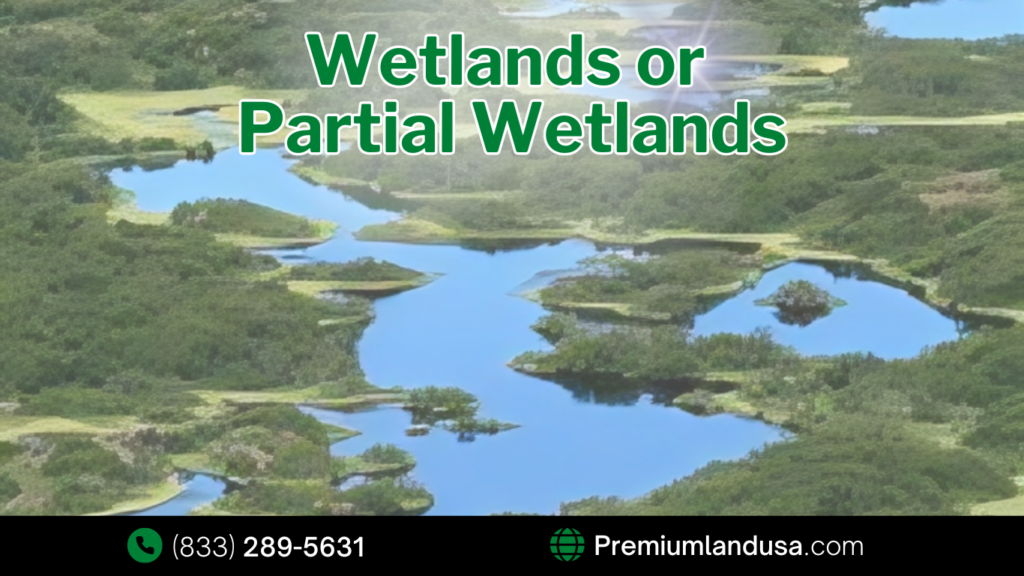Owning land in or near wetlands can be a unique opportunity, but it also comes with specific challenges and regulations. Wetlands are protected ecosystems that provide essential environmental benefits such as flood control, water purification, and wildlife habitat. If you’re considering building on land classified as wetlands, it’s important to understand the rules and potential limitations. Here’s what you need to know.
What Are Wetlands?
Wetlands are areas where water covers the soil or is present near the surface for extended periods. These areas can be freshwater, saltwater, or brackish and often support distinctive plant life adapted to water-saturated conditions. Wetlands can include marshes, swamps, bogs, and similar areas.
Can You Build on Wetlands?
Building on wetlands is possible, but it’s heavily regulated. Local, state, and federal agencies, such as the U.S. Army Corps of Engineers and the Environmental Protection Agency (EPA), oversee wetlands protection and development to ensure minimal impact on the environment.
Here are the steps and considerations if your property is located in or near wetlands:
1. Wetlands Delineation
First, you’ll need to determine whether your land is classified as wetlands. A wetlands delineation is a scientific process conducted by professionals to map and classify wetland boundaries on your property. This process identifies which portions of your land are subject to wetland regulations (EPA).
2. Obtain Permits
If your property contains wetlands, you’ll need to apply for a permit from the U.S. Army Corps of Engineers or other relevant agencies before starting any construction. The permit process assesses the environmental impact of your project and outlines necessary mitigation measures. In many cases, permits are required even if only a portion of your land is wetlands (U.S. Army Corps of Engineers).
3. Mitigation and Conservation
If your building project is approved, you may be required to take measures to offset the impact on the wetlands. This can include creating new wetland areas, restoring damaged wetlands, or contributing to wetland conservation projects elsewhere. These efforts ensure that the overall ecosystem remains balanced despite the development (EPA).
4. Limitations on Use
Building on wetlands or near wetlands may come with restrictions. For example, you may need to build on elevated structures (such as stilts) or avoid certain types of construction that could damage the ecosystem. Additionally, some activities like draining or filling wetlands are typically prohibited (U.S. Fish & Wildlife Service).
Risks of Building on Wetlands
Building on wetlands can introduce specific risks and challenges:
Flooding: Wetlands naturally retain water, making the land prone to flooding. This can pose structural risks to buildings.
Soil Stability: Wetland soils are often soft and waterlogged, which can make construction more difficult and costly. You may need to invest in special foundations or soil stabilization methods (Homebuilding & Renovating).
Environmental Impact: Development can harm the ecosystem, affecting local wildlife and water quality, which is why stringent regulations are in place.
Alternatives to Building on Wetlands
If you discover that your property is located in wetlands, you may want to explore alternative options. Some possibilities include:
Building on a Different Part of the Property: If only a portion of your property is wetlands, you might be able to build on the non-wetland areas, avoiding the need for extensive permits and regulations.
Conservation Easement: In some cases, you can establish a conservation easement on the wetland portion of your land. This legally protects the area from development while potentially offering tax benefits (U.S. Fish & Wildlife Service).
Final Thoughts
Building on wetlands or properties with partial wetlands is possible, but it requires navigating complex regulations and environmental concerns. Before proceeding, make sure to have your land professionally evaluated and work closely with environmental and legal experts to ensure you comply with all requirements.
Protecting wetlands is crucial for maintaining our ecosystem, and with the right approach, you can balance development with conservation.
References
Environmental Protection Agency, “Wetlands Protection and Restoration.”
U.S. Army Corps of Engineers, “Regulatory Program and Permits.”
U.S. Fish & Wildlife Service, “Wetland Conservation.”
Homebuilding & Renovating, “What You Need to Know About Building on Wetland Areas.”

